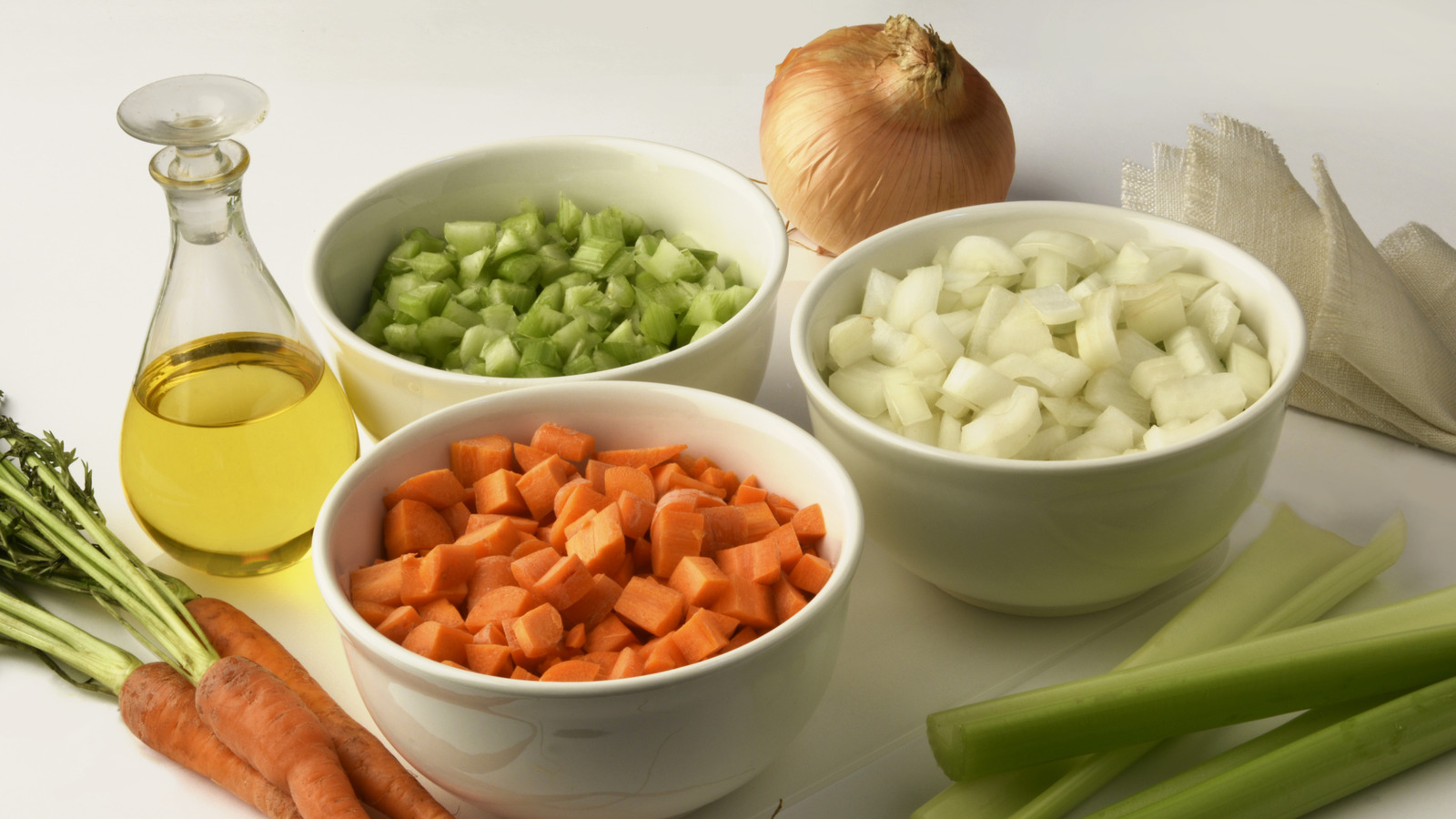Many cuisines around the world use vegetable mixtures as a base to create layers of flavor and add depth to recipes. In general, these mixtures comprise a handful of simple vegetables and herbs known as aromatics, which can include garlic, onion, celery, ginger, bay leaves, and other herbs and spices. These mixtures — sauteed in oil or butter until they practically disintegrate — are the start and the stars of many a classic recipe.
In France, the mixture of diced onion, carrot, and celery is known as mirepoix, while in Italy, a similar base is used called soffritto, not to be confused with Spanish sofrito for which onion, garlic, and tomatoes are sauteed in olive oil, or the sofrito from Puerto Rico, which includes fresh cilantro. And a Cajun gumbo would not exist without the Holy Trinity of onion, celery, and green bell pepper. While the principle is the same and the mixtures are similar, there are some key differences between them, including ingredient swaps and additions, cooking techniques and times, and the recipes in which they are used.
What is mirepoix and how is it used?
For mirepoix, the vegetables are diced and slowly sauteed in butter until they are tender, fragrant, and translucent without letting them brown. An approximate average ratio of vegetables for mirepoix consists of two parts onions, one part carrots, and one part celery, but as is the case with many recipes, the amount of each vegetable may vary depending on the recipe in which it will be used as well as on the cook. When using mirepoix in a recipe that contains meat, such as a roast, it’s recommended to sear the meat first and use that fat to sauté the vegetables, perhaps adding a bit of butter as needed.
Regardless of the ratio, it is important to chop them into a uniform size so that they cook evenly. As long as they are cut uniformly, you can chop them small for short cooking times or leave them larger if they need to cook for longer. The finer you chop them, the quicker they will release their flavors. Once it’s ready, mirepoix is used as a foundation for just about everything, like this yummy split pea soup, as the start to the filling for a flaky pot pie, or to flavor beef or chicken stews and enrich braises such as coq au vin or Boeuf Bourguignon. In some dishes, the mirepoix may be strained or scooped out, leaving only its rich flavors, before proceeding with the recipe.
What is soffritto and how is it different?
For soffritto, the vegetables are minced rather than diced and are allowed to slowly brown and caramelize until they practically melt into a paste, which will disappear into the final product. In Italy, soffritto is generally used the same way as mirepoix: as a base for sauces, soups, and braises. In fact, a proper Ragu Alla Bolognese is made by building the sauce slowly atop the fragrant soffritto, to which bay leaves and tomato paste are also added. Soffritto is also used as a base for risottos and soups such as a hearty minestrone.
The Italians know the uncooked mixture of onions, carrots, and celery as battuto. To turn it into soffritto, the vegetables are sauteed in olive oil (the name soffritto comes from the action of stir-frying). Garlic is often added as well, and for certain recipes that require a richer flavor, it’s not uncommon to add finely diced cured meats such as pancetta or prosciutto to the basic mix. You can also tailor it to your taste by adding other herbs like rosemary, thyme, fennel, parsley, or basil.







